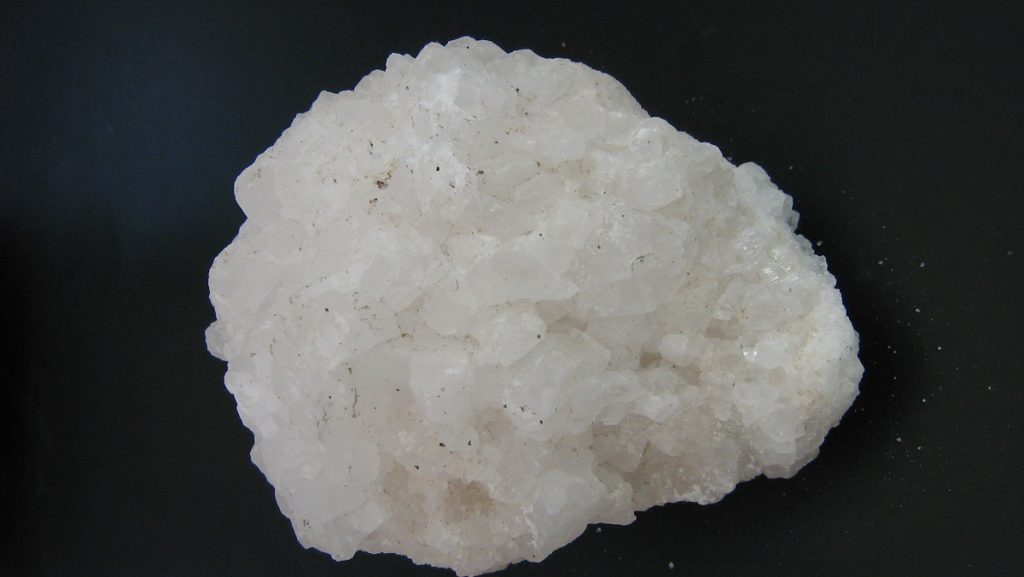Table of Contents
There are many minerals found on the earth that are used for different purposes. It is essential to understand that each mineral has its own chemical composition that makes it ideal for specific tasks. There are many minerals that come handy in industrial uses. With the wake of industrialization, the use of minerals stated to increase. The chemical properties of different minerals make them ideal for various purposes.
Bischofite is also one of the minerals that have different industrial uses as well. It is referred to as hydrous magnesium chloride mineral that has a formula of MgCL2 6H2O. This sea salt concentrate comes under halides. Additionally, it is ecologically pure natural magnesium poly-mineral, which carries a distinctive composition.
It encompasses various macro as well as microelements that are vital for human health. The main compound in Bischofite is magnesium chloride, which measures up to 350 g/l. And, the other 70% elements in it are considered impurities that include boron, bromine, potassium, silicon, calcium, sodium, iron, coppers, zinc, molybdenum, and silver.

Discovery of Bischofite
Bischofite was discovered in the year 1877 and attributed to Carl-Christian Oschsenius. It is named after Gustav Bischof, a reckoned German geologist. Bischofite was basically an evaporite structure formed on an ancient seabed, which was amalgamated for over 200 million years ago, which come around the Permian period.
Between the year 1930 and 1950, a massive amount of Bischofite was discovered along the Volga river located in Russia. It is mined by liquidating an underground dry mineral stratum using artesian water, and the brine is then pumped out.
The Identification of Bischofite
Bischofite is white or colourless minerals that have translucent, at times transparent appearance featuring vitreous lustre, as well as a white streak. It showcases conchoidal fractures and can be created as a giant granular or fibrous structure. Bischofite has a density of 1.56 g/cm3, whereas its hardness ranges between 1.5 and 2.
Deposits of Bischofite
The deposits of Bischofite is different from the composition. Some deposits are salt basins where the mineral is combined with other types of minerals, including halite, carnalite, anhydrite, and kieserite. These are the Bischofite that contains rocks feature orange-red and pink-brown-yellow colours. These kinds of deposits typically have Bischofite between 36% and 58%.
Additionally, in Stabfurt, Germany, carnallite deposits are considered the most prominent minerals in potassium salt deports. In the US, China, Kazakhstan, and Turkmenistan. There are some Bischofite deposits that hold a very high concentration of minerals that would come between 93% and 96%. One of the unique deposits is found in Volgograd, Russia. In 1990, a deposit was discovered in Poltava, Ukraine, which is among the oldest and deepest Bischofite deposits in the world.
Bischofite Mineral Uses
Bischofite minerals uses are widespread varying from agriculture, construction to medical and chemical and oil extraction industry.
These naturally-occurring minerals are used in compressed form in order to treat joint issues such as rheumatic fever, arthritis, radiculitis, osteoarthritis, rheumatoid arthritis, traumas, calcaneal spur.
Moreover, the mineral is also used in the manufacturing of industrial Sorel cement, as well as synthetic carnallite. Similar to sodium chloride, Bischofite is also applied in deice roads.
Applications of Bischofite
Bischofite, with its unique chemical composition, has a wide range of applications in different industries. It is majorly used in the construction industry where many of the construction materials are made with Bischofite like tiles, stones, and many of the tools as well.
Bischofite has proven to be a great material for making constructional materials. Apar from the construction industry, Bischofite is also used in the agriculture sector as well. From making pre-plant seeds and to facilitating the plant processing during vegetation.
Bischofite is also used as medications to treat joint-related ailments like arthritis, osteoarthritis, rheumatic fever, etc. You can find Bischofite in many of gel medicines used to treat the joint pain. There are many trauma centres that have been created for the rehabilitation of arthritis.
The production of Sorel cement and synthetic carnallite also involves the usage of Bischofite. Even the Bischofite solution is used for deicing roads that work similarly to sodium chloride. It is important to understand that Bischofite is less corrosive. Hence, it makes a great solution for deicing roads.
The Bottom Line
Minerals are everywhere on the earth that are used for different purposes. Each holds distinctive chemical properties that make them ideal for industrial use. Bischofite is also a magnesium chloride mineral that belongs to halides.
It is a pure element that contains many macro and microelements making them ideal for industrial use. Bischofite has many applications ranging from construction, agriculture to oil extraction. It is essential to understand that Bischofite has some specific chemical properties that make them perfect for industrial applications.
The above mentioned were some of the important information about Bischofite that you must know before you make optimal use of it.



